ChatGPT is for link-builders like power tools for carpenters. You can build a table or cupboard without a table saw, but why would you waste so much extra time and energy?
In the article, I will show you 11 ways you can use it to boost link-building efforts: ones we use regularly to streamline our processes, and ЯЧones shared by accomplished SEOs and outreach specialists.
1. Use ChatGPT to Find Listicles Where You Can Get Featured
Securing a link in an existing listicle is like hitting a jackpot. The article already ranks and brings organic traffic, and getting featured along with similar products or services helps you position yourself as an alternative.
To find relevant listicles, use a prompt like “give me 50 best listicles about software development.”
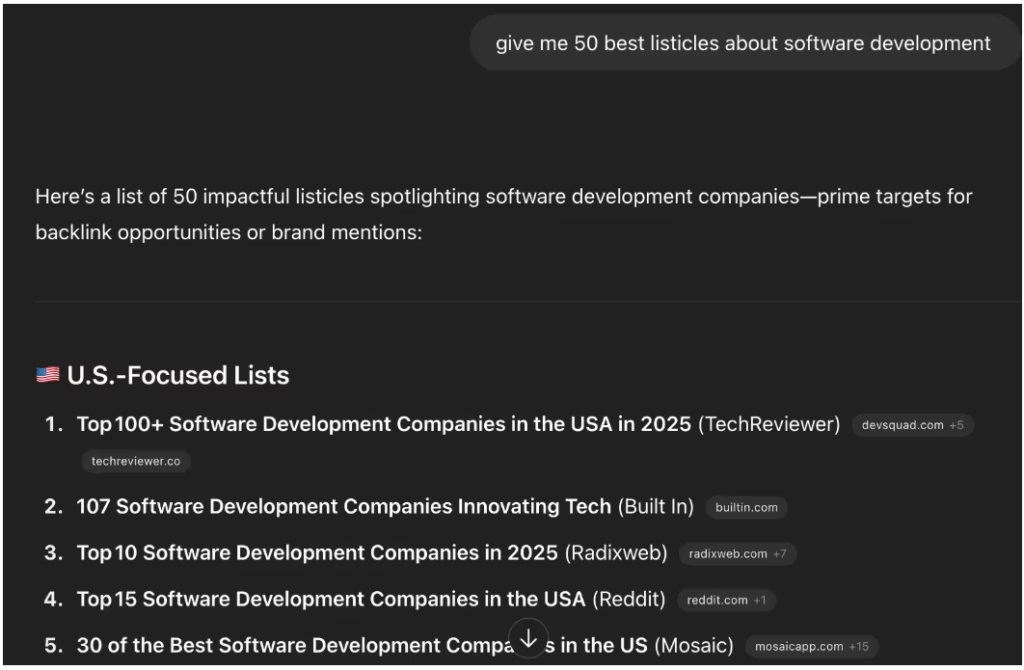
Listicles have recently become even more popular because LLMs cite them in their answers. If your brand gets featured, it can appear in ChatGPT, Perplexity, Gemini responses, or AI Overviews.
You can find the right ones by searching for the relevant keywords. Say “best SEO tools” or “best digital marketing agencies.”

You can use this strategy to find other prospects to target, like directories.
2. Use ChatGPT to Create Listicle Entries
Creating listicle entries is a repetitive task: you have to rewrite your product description again and again.
And each needs to be tailored by “following the structure and writing style, and outlining distinct features based on the focus of the article,” explains Evelina Milenova, the SEO and Growth Manager at Opinion Stage.
To automate this, Evelina created a custom GPT that writes a first draft of these product write-ups, and then she edits it manually.
This saves her time and addresses blind spots, like always promoting the same few product features or using the same brand wording in different contexts.
3. Use ChatGPT to Reverse-Engineer Competitor Backlinks
Analyzing hundreds of competitor backlinks takes ages manually, and you’re likely to miss patterns anyway.
The solution?
Use Chat GPT to surface recurring patterns and identify new similar opportunities.
Here’s how to do it:
1. Export your competitors’ backlinks into a spreadsheet (URL + title + anchor text). Either all of them or filtered by predefined criteria, like DR, traffic, dofollow, etc., depending on the total RD count.
2. Upload them into the GPT and run the prompt:
“Based on this list of backlinks, summarize what types of websites link to [competitor.com], and suggest 10 similar sites or strategies I can target for [mybrand.com].”

3. Wait for ChatGPT to analyze the data. The result will look like this:
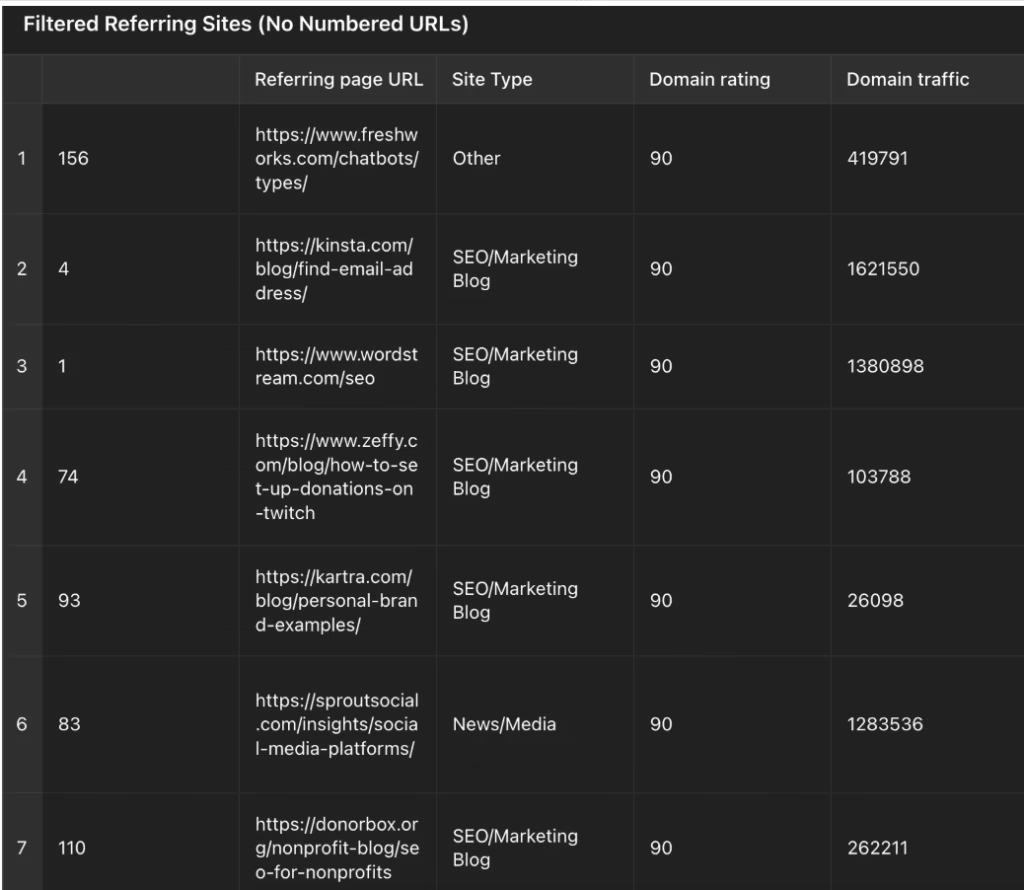
4. Use ChatGPT to Discover Aged Domains That AI Still “Remembers”
ChatGPT and other LLM tools continue to recommend websites that are no longer active but still have a solid reputation and once hosted active content.
Ones that you could scoop up and use for link-building purposes, like:
- Building PBNs
- Launching microservices with pre-warmed trust signals
- Setting up 301 redirects to strengthen the authority of your main site
To find them, use the prompt:
“List the SaaS startups in the US from 2010 to 2020. Include startups that might no longer be active.”
Here’s what it returns:

One of these is ansaro.com, which is currently for sale:

5. Use ChatGPT to Find High-Visibility Reddit & Quora Threads to Mention Your Brand
According to a recent Semrush report, Quora and Reddit are the most cited AI Overview sources, and ChatGPT and Perplexity draw from them extensively, too.
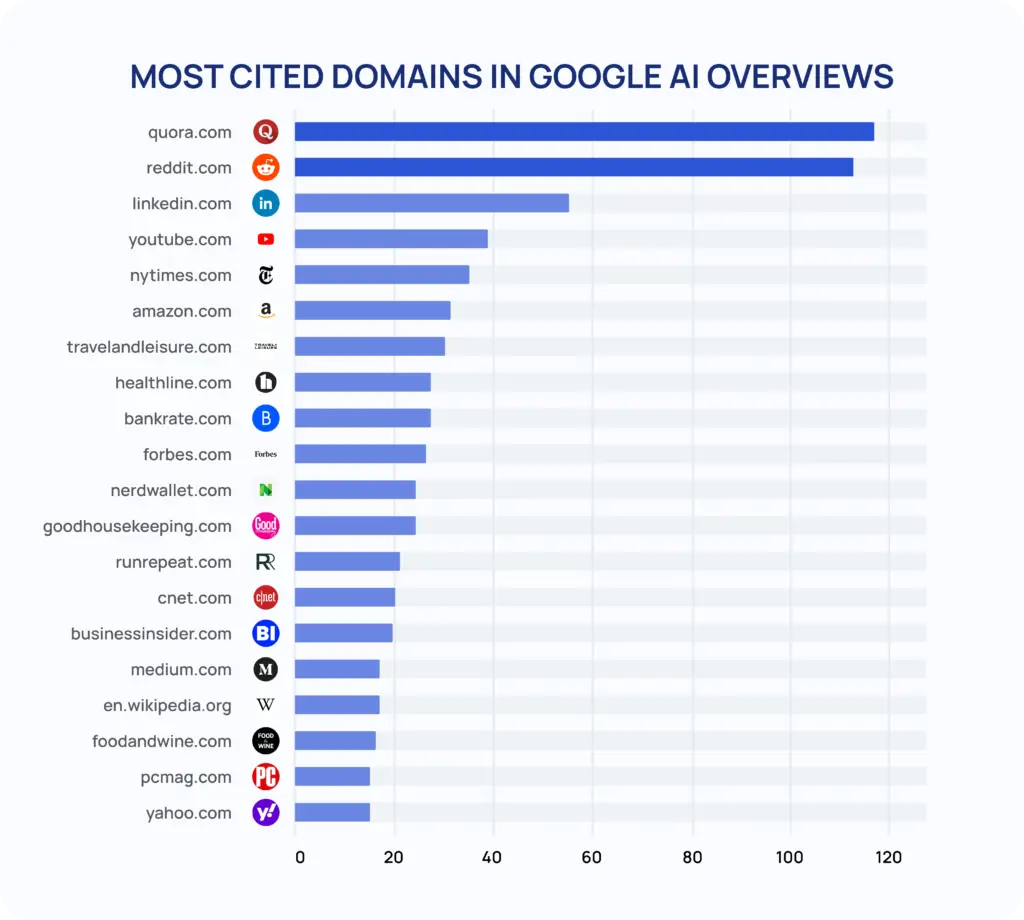
Reddit also has an agreement with Google, so its threads rank high in SERPs, and it can help you get organic visibility, too - even if they include just mentions, no links.
Of course, not all threads are equally valuable, and that’s where ChatGPT comes in.
With the right prompt, it can help you find high-engagement threads where your product or service would fit naturally:
“Find active Reddit and Quora threads where users compare [SEO tools/link-building services/etc]. Prioritize ones with lots of upvotes or recent replies.”
Here’s the result:
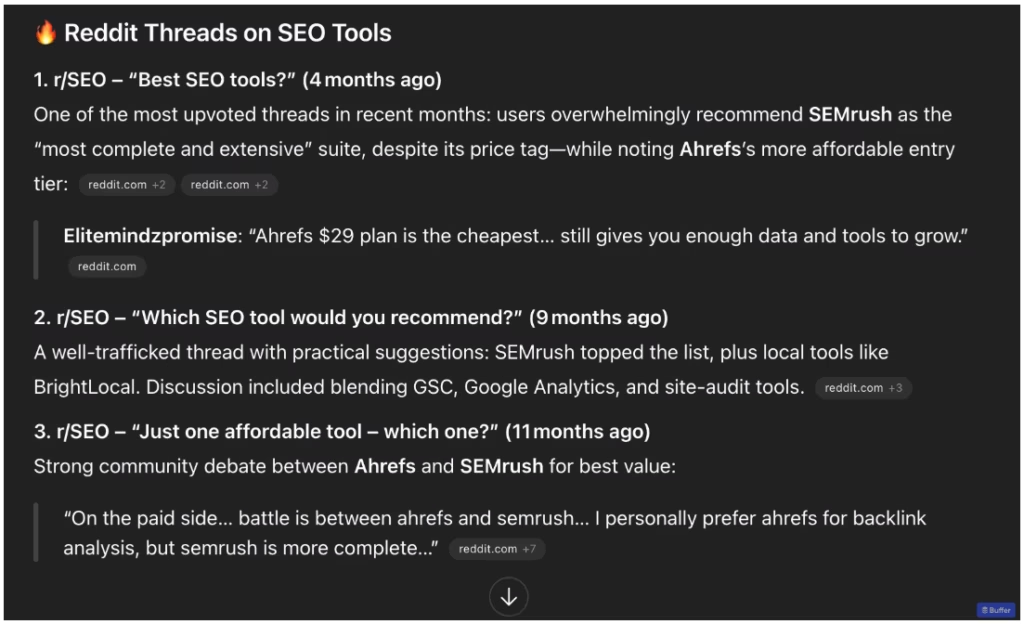
From there, you can drop a soft brand mention or reply with a genuine recommendation.
Just don’t spam them with self-promotional posts.
6. Use ChatGPT to Build a Link-Worthy Anchor Text Plan
Anchor texts can make or break your link-building efforts. Random anchors? Messy link profile. Irrelevant ones? Google gets confused, and your rankings tank. Over-optimized ones? You risk penalties.
Smart link builders plan their anchors strategically, like any other part of the process.
And they use ChatGPT to help.
Here’s a prompt example:
“Create a natural anchor text plan for a link-building agency [Editorial Link / www.editorial.link] promoting pages like: homepage, ‘white-label link building’ service page, and a blog post about ‘editorial link insertions’. Include branded, partial-match, exact-match, generic, and naked URL anchors. Suggest which types work best for guest posts, niche edits, and resource placements.”
The output gives you:
- Safe distribution
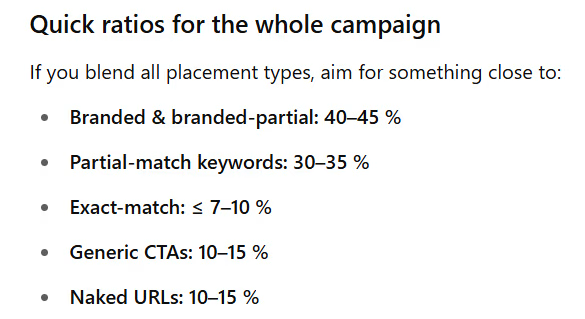
- Anchor-to-link-type matching
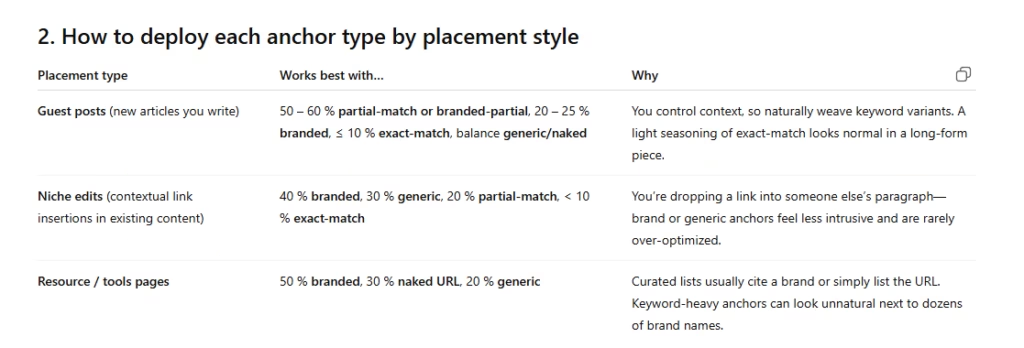
- Specific examples for each page
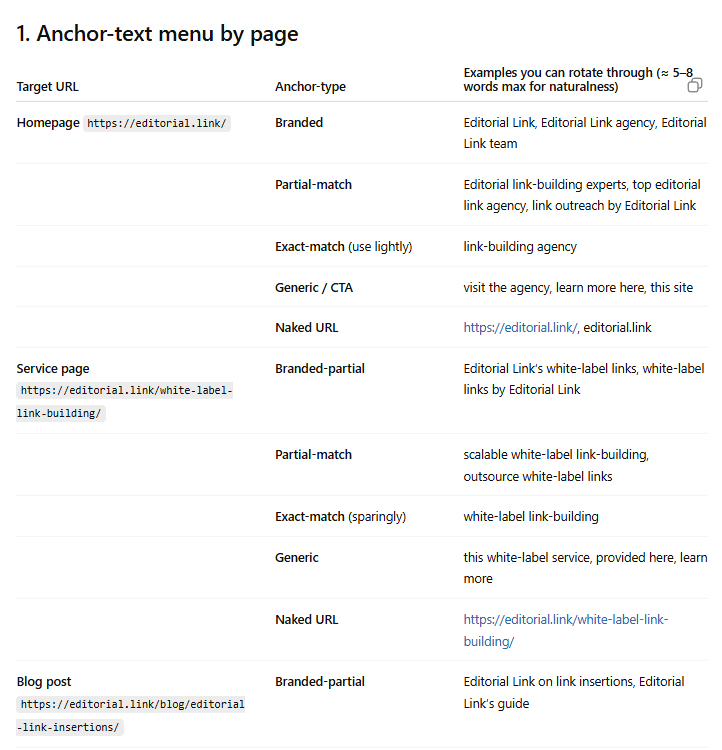
7. Use ChatGPT to Identify the Best Way To Insert Your Link
Once you have your anchor texts, ChatGPT can help you find the best ways to insert them into existing articles.
To do so, Evelina Milenowa built another custom GPT:
I copy/paste the article, give it the target page, the potential anchor text, and it gives me a couple of suggestions where this could go into the article.
This saves Evelina plenty of time. And I’m impressed with how little editing the suggestions require (unlike some of the other ChatGPT output I see all the time.)
Evelina achieved this by training the GPT with very specific guidance.
She’s instructed it to add links in three different ways: use an anchor that is already in the article, a very small text edit, like one to three words maximum, or a larger text edit, up to one sentence.
This is very different than how ChatGPT would naturally do it” she explains, “because naturally, it would write a whole paragraph. And in link building, in most cases, you can’t expect major edits to the existing text. Some editors will add a paragraph, but the majority won’t.
The GPT is also trained not to write CTAs, as these sound promotional, not to suggest insertions in the intro or conclusion, and to avoid complex words.
8. Generate Linkable Asset Ideas in Seconds
Linkable assets get backlinks, and ChatGPT can help you create them from the beginning to the end, starting with ideation.
We use it regularly to brainstorm ideas for link magnets.
Here’s a prompt example:
“Give me 20 content ideas for a link-building agency that are built to earn backlinks. Prioritize formats like data studies, templates, tools, or expert roundups.”
Here’s what the results look like:
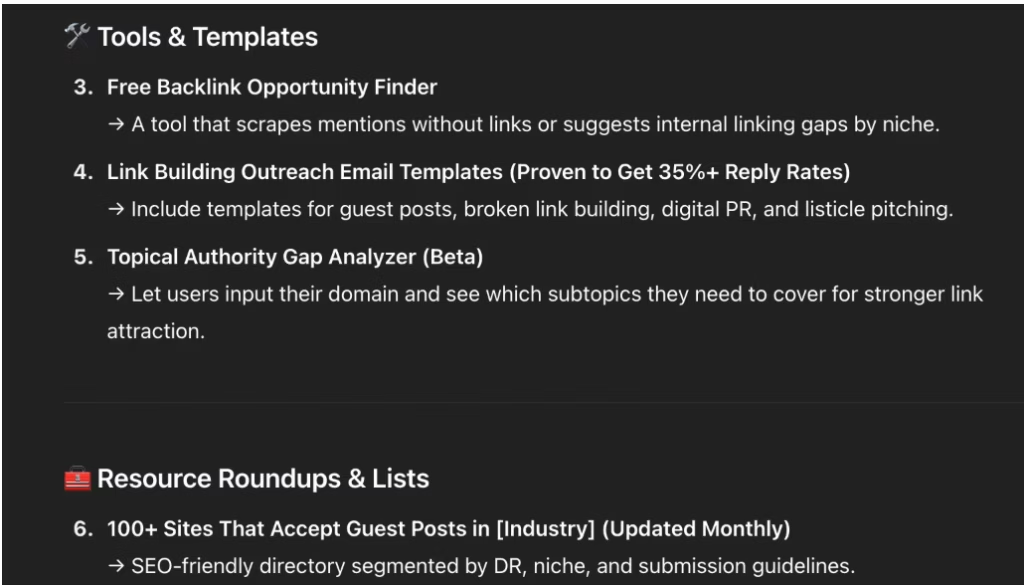
Sure, these aren’t always ready ideas, but often a good starting point.
9. Use ChatGPT to Tailor Outreach Emails
The main reason outreach fails?
It sounds like mass spam.
With ChatGPT, you can write personalized emails that don’t feel like copy-paste spam.
I asked Paul DeMott, the CTO at Hellium SEO, about his process:
Once we gather domains, company names, and recent article data, we batch that into prompts that generate personalized outreach based on content fit.
Here’s the prompt that he uses:
Write a cold outreach email to [Company Name], a [Company Type] that covers [Topic]. Mention their article titled [Blog Title]. Pitch a content exchange or backlink to our guide called [Our Guide Title]. Keep it under 150 words. Keep it natural. Make the CTA clear. Avoid sounding like mass outreach.
Of course, you could create such personalized emails manually, but that would take hours. Now, it can be done in a fraction of the time:
Before AI, it took 15 minutes per email to research a blog post, write a pitch, and edit for tone. At scale, that cost us hours per day. Now we feed a spreadsheet into our prompt loop and generate 50 customized emails in under two hours.
Another win: higher response rates - up from 6% to 8.3% - which Paul attributes to higher relevance.
This doesn’t work just for the first emails but also for follow-ups, as Lonnie Jones, the founder of Local SEO Help, notes:
We don’t want to send robotic second emails, so we prompt ChatGPT to write light-touch, human-sounding nudges that refer back to the original outreach and invite a response.
Here’s his prompt:
Given this outreach email and the lack of response, write a follow-up that lightly references the original, reaffirms the value for their audience, and invites open feedback.” It keeps the tone right without sounding like automation, and we’ve seen a noticeable bump in replies from this small change alone.
10. Use ChatGPT to Find Unique Pitch Angles
There’s another reason cold emails fail: Everybody uses the same templates and hooks, so they all sound like everything else the prospect has seen before.
Pavel Buev, the SEO & SEM expert at Pynest, has found a solution. He uses ChatGPT to find unique pitch angles:
I use ChatGPT most effectively during the asset–to–angle mapping stage, when I’m trying to identify non-obvious outreach angles for existing content or data…Say I have a SaaS client with a case study or product page. Instead of spinning it as “just another feature announcement,” I feed the asset to ChatGPT and ask it to uncover topical hooks relevant to news, influencers, or resource curators.
This is the prompt that he uses:
You are a link-building strategist. I’ll paste the content of a SaaS case study. Generate 5 unique and timely outreach angles that could appeal to journalists, bloggers, or site curators. Make sure each angle maps to a specific audience or topical hook (e.g., trends, expert lists, benchmarking, tools, etc.). Avoid obvious SEO clichés.
As Pavel points out, using ChatGPT in this way will never replace his judgment; instead, it helps him to “scale his creativity”:
It’s hard to maintain creativity after 10 campaigns in a row. ChatGPT acts like an idea partner with endless mental energy. It doesn’t replace my judgment — it expands the surface area of ideas. Many of my recent earned links (including DR70+ publications) came from angles I wouldn’t have landed on solo.
11. Use ChatGPT to Find Guest Post Ideas
When looking for guest post topics, you want something that the target audience will find interesting but hasn't been covered in the prospect's blog - and ideally not in others' - and within your expertise.
When done manually, finding relevant topics is labor-intensive, but ChatGPT can help.
Here’s a prompt that Jordan Stevens, the founder of Jordan Stevens Digital Marketing Consulting, uses:
You are an SEO specialist with expertise in link building and guest posts. Our client has an opportunity to pitch to a website to have their content placed. I want you to look at our client's website and the opportunity website and come up with 10 non-obvious content ideas that are appropriate for my client's expertise and would be valuable for the audience of the guest post sites and filter your ideas to include current trends in the space, underserved audiences, and emerging topics. Rank them by uniqueness and execution difficulty. Client's website:
Guest post website: "
FAQ: ChatGPT for Link Building
To finish, let’s answer a few FAQs about using ChatGPT for link building.
Can ChatGPT build backlinks for me, fully on autopilot?
No, ChatGPT won’t replace a link-building or outreach expert. The process is too complex and requires human judgment. And specialist expertise.
If you don’t have the time or resources, fully-managed link-building services like Editorial.Link’s can take this off your plate completely.
Can I use ChatGPT to automate outreach?
You can use ChatGPT to automate aspects of the outreach process, like generating and personalizing outreach emails at scale.
When combined with tools like Zapier, it can help you automate response tracking. Or write follow-up messages.
But you still need a human to find the right prospects, review and edit the content, and nurture the relationships.
Can AI-generated content still attract backlinks?
It's getting less likely. These days, to attract links, you need to present original ideas, data, or frameworks - something that makes your content stand out.
However, LLMs, which look for patterns, tend to ignore unique ideas in favor of established ones, resulting in content that’s similar to other things that have already been written.
Having said that, AI can help you turn your original thoughts and data into quality linkable assets faster.
Final Words
ChatGPT can help you optimize all aspects of the link-building process. The 11 ways above are just a handful of examples - there's so much more that you can achieve.
But at the end of the day, it’s just a tool. You still need the skills and experience to use it effectively. That’s why it won’t replace specialist link-building services like ours in the foreseeable future.
If you need help with your link-building campaigns, get in touch with the Editorial.Link team!





